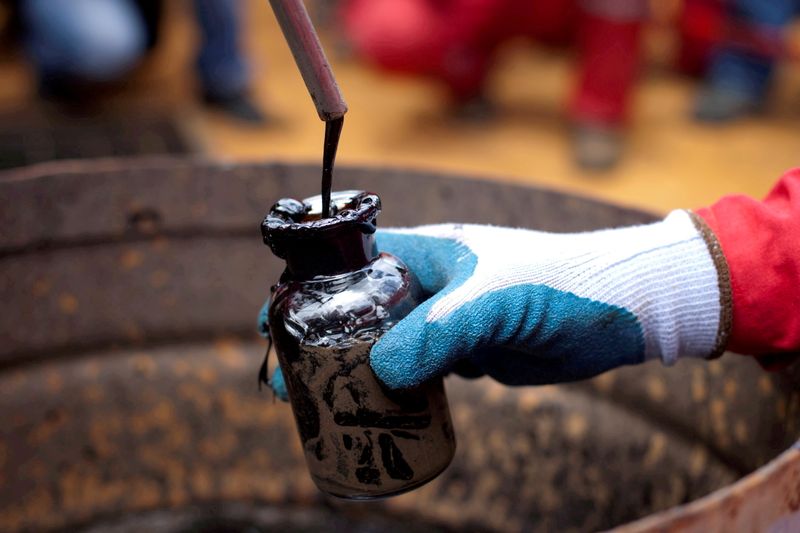By David Gaffen
NEW YORK (Reuters) -Oil prices slumped on Wednesday, driving major benchmarks to their lowest settlement levels since early October, after OPEC and the International Energy Agency warned of impending oversupply, while rising COVID-19 cases in Europe increased downside risks to demand recovery.
Prices dropped further in thin post-close trading after Reuters reported that the United States was asking other major global oil consumers like China and Japan to consider a coordinated release of oil reserves to bring prices down.
Brent crude futures fell $1.36, or 1.7%, to $81.05 a barrel by 12:18 p.m. EST (1718 GMT). U.S. West Texas Intermediate (WTI) crude futures settled at $78.36, down $2.40, a 3% decline.
The declines took Brent to its lowest close since Oct. 1 and U.S. crude to its lowest settlement since Oct. 7. Traders said funds apparently are weighing a greater likelihood that supply will start to outpace demand, with sharp declines in near-term futures pointing to funds closing long positions.
"It signals a movement towards balance which we’ve not seen for many months," said Tony Headrick, energy analyst at CHS Hedging.
In post-close trading, U.S. crude fell to $77.98 a barrel.
The global oil market has been focused on the swift rise in demand against a slow increase in supply from the Organization of the Petroleum Exporting Countries and its allies, along with reluctance from big U.S. shale players to overspend on drilling.
However, both the IEA and OPEC in recent weeks said more supply could be coming in the next several months. OPEC and its allies, known as OPEC+, have maintained an agreement to boost output by 400,000 bpd every month so as not to overwhelm the market with supply.
On Tuesday, OPEC Secretary General Mohammad Barkindo said the group sees signs of an oil supply surplus building from next month adding its members and allies will have to be "very, very cautious."
Other nations, including the United States, have called for OPEC+ to boost output more swiftly. The United States has considered announcing an emergency release of crude from its Strategic Petroleum Reserve, which contains more than 600 million barrels of oil.
In the last two weeks the U.S. Energy Department has sold more than 6 million barrels of oil - part of previously approved sales.
The United States currently has discretion to sell several million barrels from the SPR thanks to previous Congressional approval. J.P. Morgan analysts said the White House could speed up those sales rather than declare an emergency - calling it the "easiest of the options the White House has" to combat rising fuel prices.
The IEA has already said U.S. supply is expected to increase at a swifter pace in the second quarter of 2022, and U.S. rig counts have been rising, with private operators seeking to take advantage of higher crude prices. The IEA expects U.S. output will account for about 60% of its forecast of 1.9 million barrels per day (bpd) for non-OPEC supply growth in 2022.
U.S. crude oil inventories fell by 2.1 million barrels last week, government data showed, running against analyst expectations for a build of 1.4 million barrels. Headrick noted, however, that the modest build in inventories at the key Cushing, Oklahoma hub of 213,000 barrels signaled that the end may be near for drawdowns. [EIA/S]

New waves of COVID-19 cases in Europe have driven some governments to reimpose restrictions; Austria has ordered a lockdown on unvaccinated individuals.
The Biden administration asked the Federal Trade Commission to investigate the growing gap between the cost of unfinished gas and what consumers are paying at the pump.